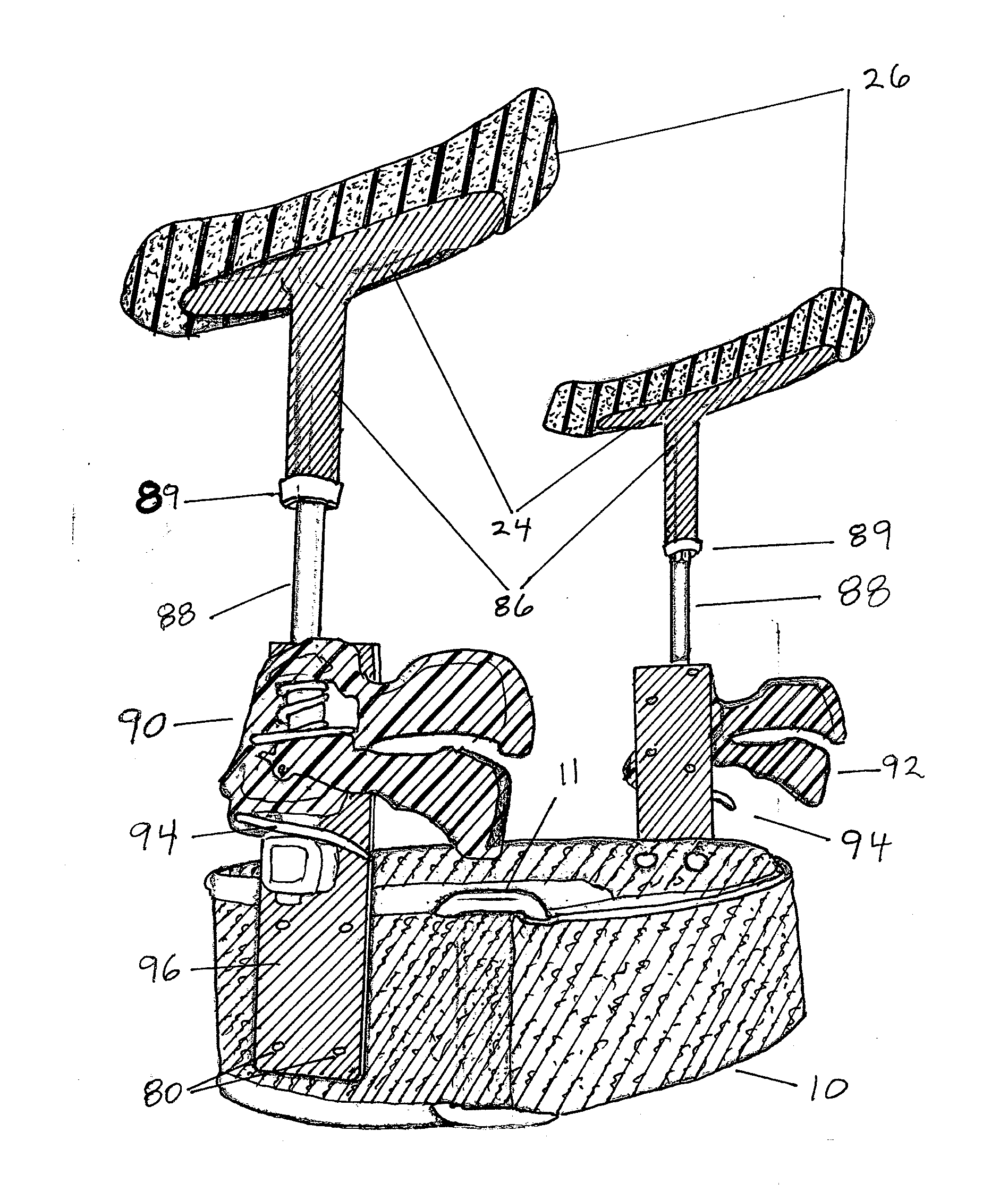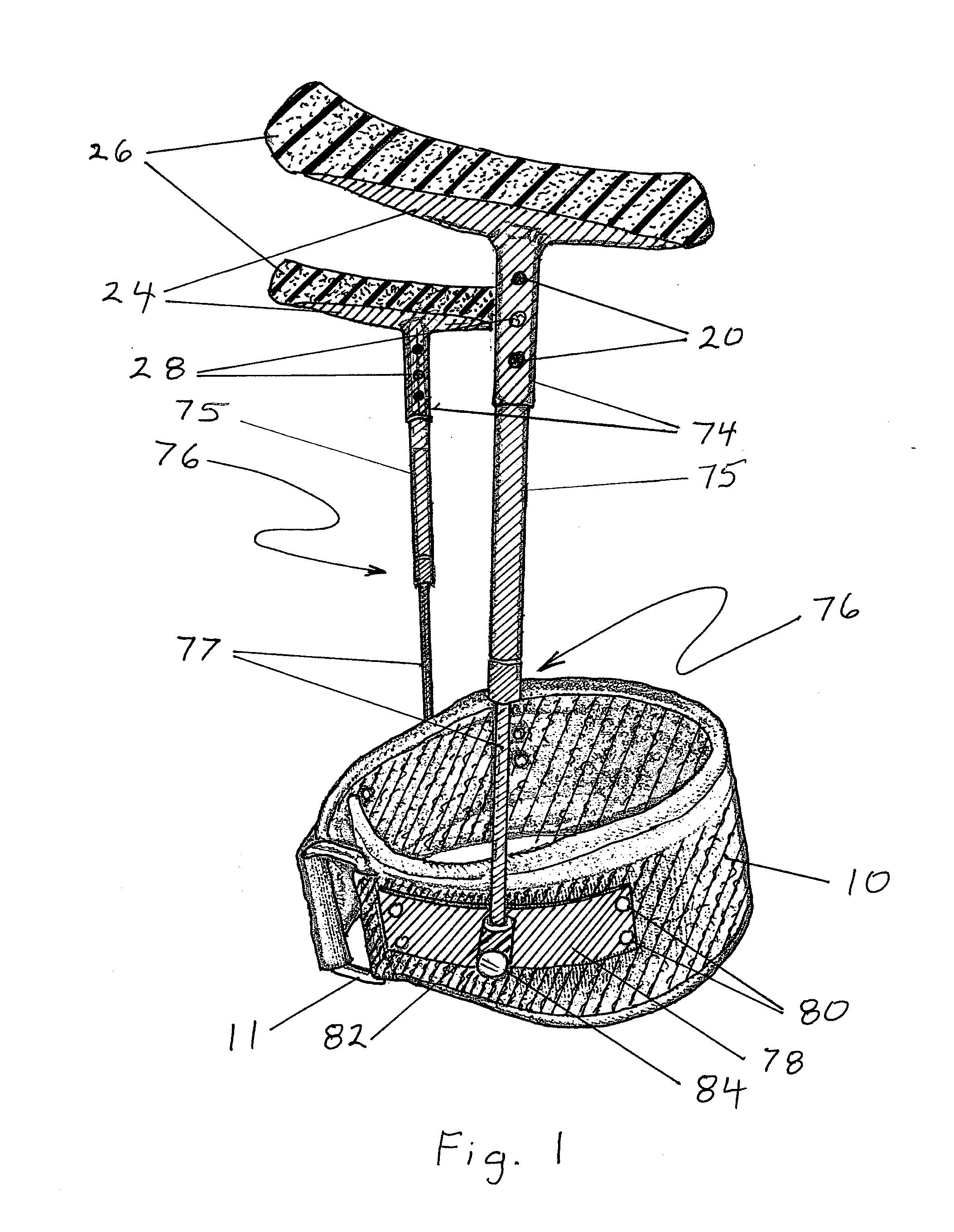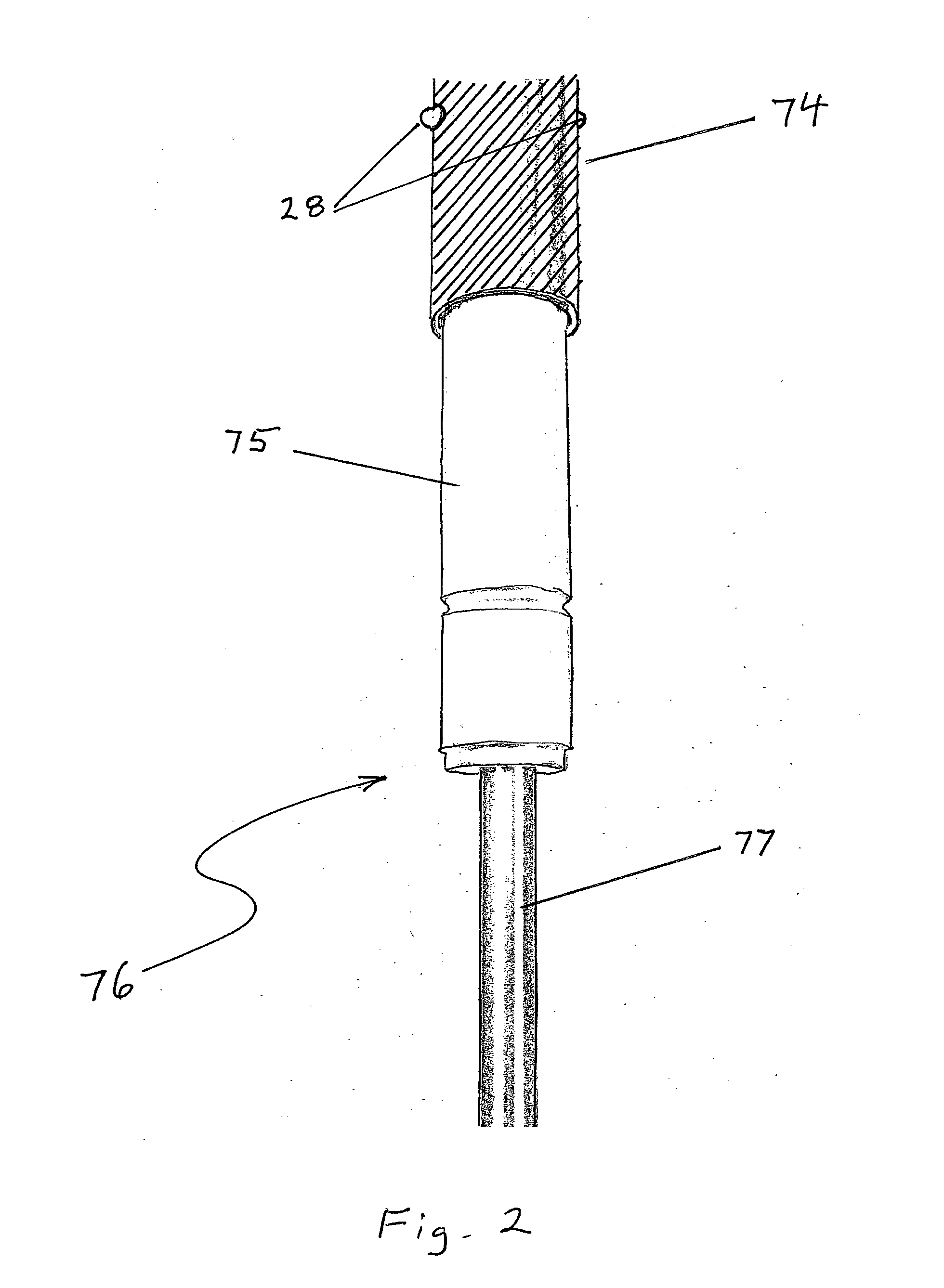Wearable crutches
a technology of crutches and wearable parts, which is applied in the field of wearable crutches, can solve the problems of no current known device, heavy traditional crutches, and recompression of the spine with each step, and achieve the effects of reducing spine compression, reducing hip, knee and ankle compression
- Summary
- Abstract
- Description
- Claims
- Application Information
AI Technical Summary
Benefits of technology
Problems solved by technology
Method used
Image
Examples
Embodiment Construction
[0021]Referring now to the preferred embodiment of the invention in more detail, in FIG. 1 there is shown a padded belt 10 with two attached crutch assemblies, each consisting of an upper strut 74 and a lower strut assembly 76.
[0022]The belt 10 is adjusted for various waist sizes by sliding the free end of the belt through the attached metal loop 11 and pulling it to varying degrees of tightness around the waist. The free end of the belt 10 has Velcro® cloth attached to one side, and it is held firmly in the desired position by pressing the Velcro® side of the belt's free end to the Velcro® cloth which is attached to the front section of the belt.
[0023]Each upper strut 74 consists of a hollow tube to which a cross piece 24 is attached at the top. Each cross piece 24 is covered with a removable pad 26. Each upper strut 74 has four 5 / 16″ holes 20 on opposing sides of the top portion of the hollow tube. Each lower strut assembly 76 consists of a hollow cylinder 75 fillable with a fluid...
PUM
 Login to View More
Login to View More Abstract
Description
Claims
Application Information
 Login to View More
Login to View More - R&D
- Intellectual Property
- Life Sciences
- Materials
- Tech Scout
- Unparalleled Data Quality
- Higher Quality Content
- 60% Fewer Hallucinations
Browse by: Latest US Patents, China's latest patents, Technical Efficacy Thesaurus, Application Domain, Technology Topic, Popular Technical Reports.
© 2025 PatSnap. All rights reserved.Legal|Privacy policy|Modern Slavery Act Transparency Statement|Sitemap|About US| Contact US: help@patsnap.com



